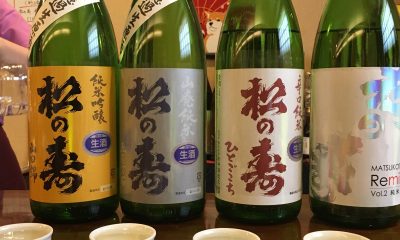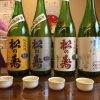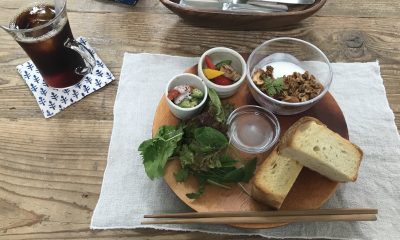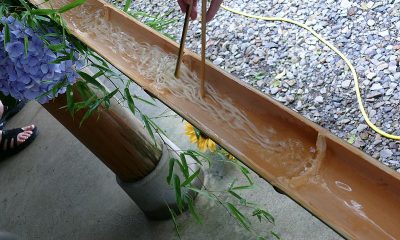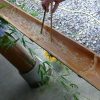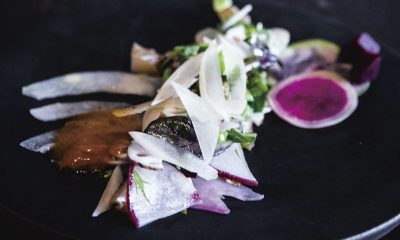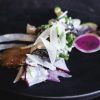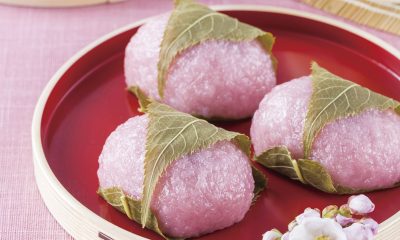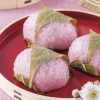Food & Drink
Kansai’s sake sommelier
Look out craft beer, Japan’s very own microbrewery tradition – jizake – is back in public favor.
Just as the production of craft sake is an art, as a consumer, knowing which to choose and how to enjoy them, is an art in itself. It’s no surprise then, that there actually exists an internationally recognised sake sommelier qualification. Kansai Scene sat down with Kansai’s very own sake sommelier, Eni Otsuka, to sniff out the story.
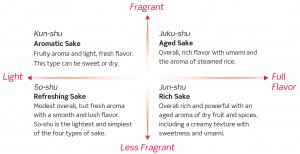 What is a sake sommelier and how did you become one?
What is a sake sommelier and how did you become one?
A sake sommelier is a sake professional. Someone with expert knowledge regarding the materials, fermentation methods, history, and proper serving methods of sake. I am a certified Kikisake-shi (sake sommelier) and an International Kikisake-shi by the S.S.I (Sake Service Institute). I am also a certified wine expert by the Japan sommelier association. I was one of three semi-finalists at the 2012 World Kikisake-shi competition, and the only female sake sommelier from Kansai. Sake is part of Japan’s cultural heritage and I hope I can help in some way to increase its popularity not only in Japan, but also around the world.
When should sake be served chilled and when warm?
Suitable serving temperatures for sake range widely, especially compared to wine or beer. Sake can be served anywhere from five to 60°C. The same sake can be enjoyed at different temperatures, with each change affecting the aroma and flavor. Generally, aromatic sake is suitable to be consumed at comparatively low temperatures (10 to 15°C) whereas a rich sake’s character, it’s umami and texture, are often enhanced at higher temperatures (40 to 55°C).
What is the jizake scene like in Kansai?
Traditionally, Kansai has accounted for some 50 percent of all sake production in Japan. With washoku being awarded Unesco World Heritage status last year, Kansai is experiencing a boom in consumer popularity and consequently, the motivation of its brewers to keep producing the amazing variety of sake on offer, from low alcohol varieties to 10-year aged sakes.
Does sake pair well with food?
Sake pairs exceedingly well with all seafood (naturally masking the often overpowering smell of raw fish) yet is surprisingly good with all types and genres of foods. It enhances the natural flavors of vegetables and in my opinion, goes better with cheese than even wine.
What is your personal favorite sake?
Kohakukou, a 10-year-old premium sake from Tsukino Katsura. This is the only koshu sake in Japan to be slowly matured for 10 years in special earthenware pots. It has a unique burnished gold color and an elegant aroma of dry fruits and spices, yet has a smooth, creamy texture with sweetness and umami.
What should a beginner look out for when buying a bottle of sake?
Sadly, unlike wine bottles, sake labels offer little clue about the quality or taste of the drink inside. My best advice is to buy from a reputable sake dealer and take their advice. Better still, only buy a sake that you have tasted first!
[box]
Try it for yourself
Get to grips with the amazing variety of jizake being produced under our noses, with 12 Osaka breweries combining together for this annual sake-tasting fest.
Osaka Jizake Tenma Festival
• OAP center
• When: May 25
• Time: 11am–4pm
• Access: 5 mins walk from JR Sakuranomiya Sta
• Entry: ¥1,000 for 10 samples + ¥300 for a sake cup (ochoko) that you can take home.
[/box]



